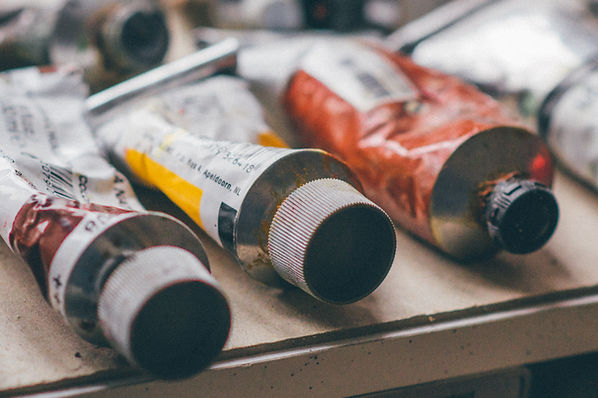
EXPLICACIÓN


Woodblock printing in Japan (木版画, mokuhanga) is a technique best known for its use in the ukiyo-e artistic genre of single sheets, but it was also used for printing books in the same period. Widely adopted in Japan during the Edo period (1603–1868)
PRINTMAKING TECHNIQUES
There are four basic methods in the making of an original print.
1,The Intaglio printing process (凹版)
2 The Relief Printing Process (凸版)
3 The Planographic Printing Process
4 Stencil Printing Process
1 The Intaglio printing process (凹版)
(◎Etching, ◎Engraving, ◎Drypoint, ◎Aquatint, Mezzotint)
◎ In this process, the areas incised or cut into a metal plate actually print the image while the un-cut surfaces are wiped clean. In Etching, a plate copper which can be eaten away by acid, is coated with an acid-resistant substance. A sharp instrument draws the image, exposing the surface on the metal. The plate is immersed in an acid bath and the exposed metal surface become [acid etched,] leaving lines or other areas recessed below the surface of the plate. Ink plate and wipe off non-printing surfaces and to transfer ink to paper using a heavy press.
◎ In Engraving, fine lines are incised directly into the plate and the burrs removed to produce clean, sharp lines on the print.
◎ Drypoint is similar to engraving but the burr is not removed, resulting in a soft, almost fuzzy line.
◎ In the aquatint process, areas covered by rosin powder become pitted when immersed in an acid bath. When inked and printed these pitted surfaces produce tonal or textural areas.
◎ In a mezzotint, a serrated tool is used to roughen areas that will retain ink to be printed, while areas to remain white are burnished and scraped smooth so that ink can be wiped away.
2 The Relief Printing Process (凸版)
(◎Woodblock, ◎Woodcut, ◎Wood engraving)
◎ A relief print is printed from an inked surface of wood, stone, metal or some other material from which the paper can accept ink from the top surface. Relief printing uses the principle of a stamp in that the artist cuts away from a block what is not needed in the design.The raised surface of the block takes the ink and prints directly onto paper. Separate blocks are required for multicolor prints. Traditional Japanese woodblock printing typically, they use water-based inks, mulberry bark paper and BAREN to apply pressure to the back of the paper during the printing process.
◎ A wood engraving differs from a woodblock in that it uses the cross-grain of a block while the woodblock uses the plank-side. Because wood engraving uses a thicker hardwood than the plywood typically used in woodcuts, finer linear gouges are often the preferred tool for producing the small fine lines and patterns that characterize wood engravings.
3 The Planographic Printing Process
(◎ Lithograph)
◎ The technique for producing a lithograph is called planographic because the printing surface is a flat plane and is neither built up nor cut into. The printing processs employs a stone or metal plate, prepared so it can utilize the principle that grease and water do not mix, thus creating image and non-image producing areas. A large heavy roller is inked and then rolled onto the plate which has been sponged with water to keep the ungreased surfaces free of ink. Only the greasy surfaces will take the ink. The paper is placed on the plate and both are run through a lithograph press.
4 Stencil Printing Process
(◎Stencil, ◎Silkscreen)
◎ The stencil technique utilizes masking material, such as paper, fabric or plastic, which has been cut or perforated to allow paint or ink to pass through and print onto another surface.
◎ In the silkscreen process, the most common stencil method used today, silk or nylon fabric is stretched over a frame and an ink resistant stencil is bonded to this screen. The frame is place screen side down with the paper to be printed placed beneath the screen. A squeegee is used to force ink, applied from the top, through the screen to form an image on the paper below.

版画とは江戸時代に作られた技法であり、彫刻や細工を施した版を作り、インクの転写・透写等によって
複数枚の絵画を製作する技法、またはそれにより製作された絵画のこと。
版画には4種の技法があります。
1- 凹版
2- 凸版
3- 平版
4- 孔版
1- 銅版画 (凹版)
(種類: エッチング、エングレービング、ドライポイント、アクアチント、メゾチント)
◎エッチングは、銅版に防腐蝕剤となるグランドを塗布して そのグランドを引っ掻いて描画することで 銅版の版面が出ます。それを腐蝕液に浸す事で、描いたところが腐食され凹ができます。この凹にインクを詰め,残りの部分は拭き取ってプレス機で圧をかけ紙にインクを刷りとります。
◎エングレービングは、古典的な技法で細かい線が直接金属にビュランという特殊な刀で彫り、その時できる彫り縁のまくれを取り除き、線は鋭くはっきりとしています。
◎ドライポイントは、鋼鉄の針で引っ掻き、金属のまくれが線の横に押し上げられ、このまくれにもインクがのるので柔からい刷りができます。
◎アクアチントは、松脂の粉を銅板に振り、それを熱して松脂を定着させ 銅板を腐食し凹版を作っていき面として柔らかな表現を可能にします。
◎メゾチントは、銅板の表面をロッカーと呼ばれる道具で ザラザラさせてまくれを作り、印刷すると真っ黒になるところを削ることによりインクのつかない部分ができます。黒から灰色へとやさしい明るさが微妙な調子で表現できるのが特徴です。
2- 木版画 (凸版)
(種類:木版、板目木版、木口木版)
◎板目木版は、板目に切り出し、丸刀、三角刀などの彫刻刀で凹凸をつくり、その凸に油性または水性の絵具をのせて、バレンで摺り紙に凸の形を写しとる技法です。多色刷りにはずれを防ぐ「見当」という目印を版の角につけて刷ります。
◎木口木版は、西洋の木版といわれ、告げ、椿、柊などの堅い木にビュランで彫り、油性絵の具を使って刷ります。
◎我が国では 江戸時代の浮世絵の存在が重要です。浮世絵は黒一色の墨摺絵からはじまり、彩色版画の過程を経て多色摺の錦絵が流行りとなります。 その後明治末に、今まで完全分業だった制作過程が 創作版画運動により 自画、自刻、自摺の方法で制作されるようになり、現代に至っています。
3- 平版
(種類:リトグラフ)
◎リトグラフは、石、アルミニウムなどに油脂性の材料で直接描き、化学処理を施して版画に油性部分と油をはじく保水部分を作ります。この面を水分を含ませたスポンジで拭き、重いローラーで油性インクをつけると、保水性のところは油をはじき描いた部分だけ油が残るのでリトグラフ用のプレス機で刷ります。
4- 孔版
(種類:ステンシル、シルクスクリーン)
◎孔版では紙や布にプラスティックにあけられた孔を通してインクをのせます。日本独自の合羽版も同じ技法で制作されます。
◎シルクスクリーンは、絹や合成繊維のスクリーンを枠に張ります。インクをはじいたり通さない部分を作り 枠内のスクリーンの上にインクを入れ,スキージというヘラ状のウレタン板でスクリーン上を圧力を加えながら平行に動かすと、布目を通してインクの下の紙に印刷されます。
